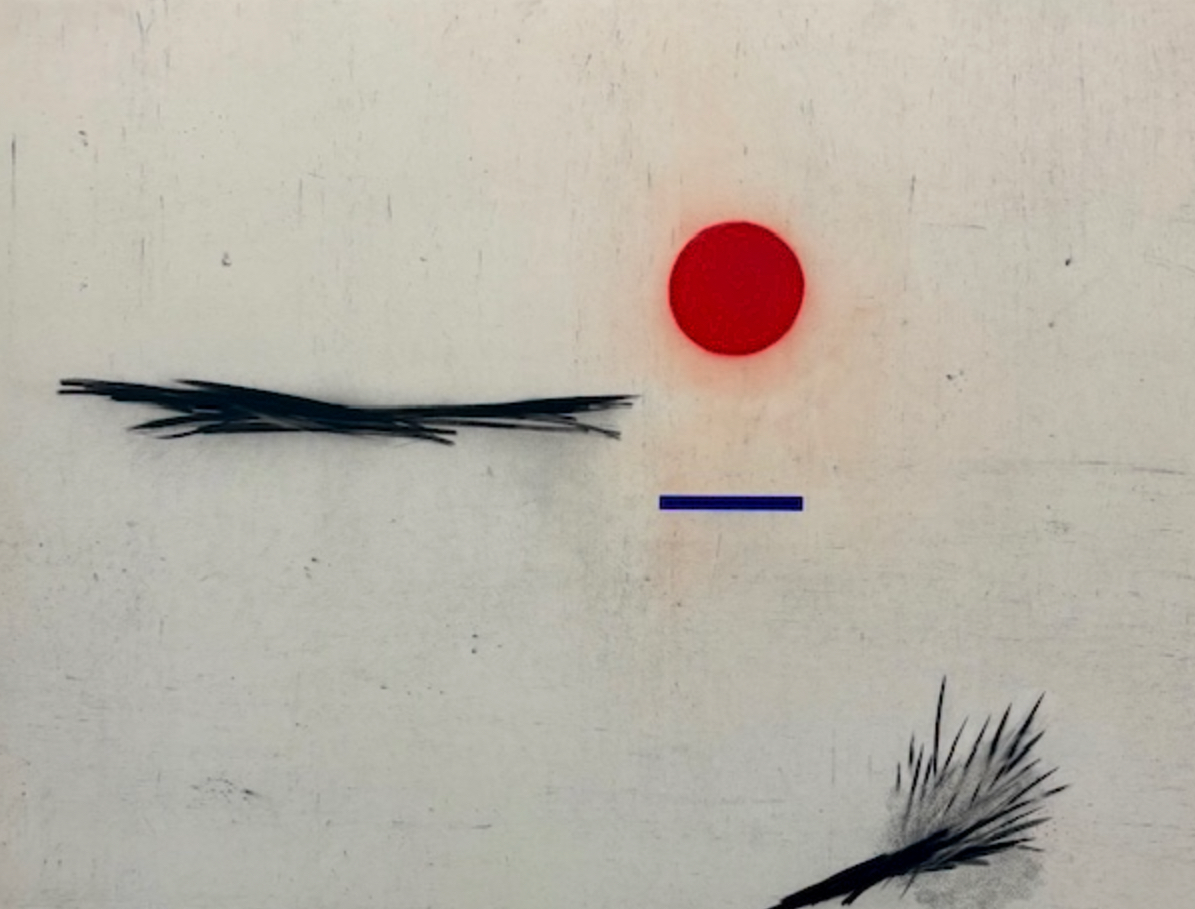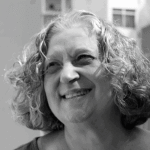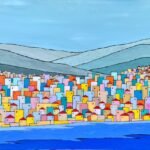[“The following copyrighted article is shared
with permission, and courtesy of theartpulse.com”]
Source link
An Article by DM (611 words, 3 min. read)
At Galerie Tanit in Mar Mikhael, from November 6 to December 11, 2025, Abed Al Kadiri’s Close Your Eyes So You Can See Me unfolds as a meditation on memory, loss, and renewal. The room is sparse yet charged: tall concrete pedestals rise like sentinels, holding golden forms that shimmer beneath the light, while a monumental wall glows with fragments of red and black. Each work stands between destruction and rebirth, between what is seen and what remains invisible.
“I no longer paint the sunset,“ Al Kadiri writes, “I trace its withdrawal into silence.“ The gesture is neither nostalgic nor mournful, it is a search for the residue of light after it has vanished. Through his restricted palette and elemental forms, the artist transforms the act of looking into a ritual of remembering.
The Field of Blossoms
The main wall installation greets the viewer with an expanse of paper panels, each carrying traces of flowers in red and black. Together, they compose a vast landscape that trembles between abstraction and remembrance. The red, once the color of fire and anguish, now appears softened like petals caught between bloom and decay. The repetition of panels suggests both continuity and fragmentation, a rhythm of persistence within rupture.
Here, Al Kadiri’s technique reveals its dual nature. Charcoal becomes the mark of what is burned, pastel becomes the whisper of what endures. The surfaces breathe; They absorb the viewer’s gaze and release it slowly, like exhaled smoke. The circle—his recurring motif—hovers above this field like a distant sun, both life-giver and witness to the aftermath of its own light.,

The Sculptures of Flight
In dialogue with the drawings stand a series of small bronze sculptures, each poised on a block of dark stone. Their polished surfaces catch every flicker of movement in the room, transforming stillness into reflection. They seem to rise, to glide, to hold the memory of wings. The contrast between the raw stone and the gleaming metal recalls the balance between permanence and transformation that defines Al Kadiri’s language.
These forms are not ornaments but meditations. They reflect the painted circles, solidifying what is fleeting, grounding what threatens to disappear. Placed among the viewer’s path, they create a choreography of approach and withdrawal, as if each step mirrored an onward journey.

The Vision Behind Closed Eyes
“Closing one’s eyes,” Al Kadiri notes. notes“It is not an act of denial but of encounter.” The exhibition takes its title from this paradox: to see beyond sight, to enter an image through absence. In the calm architecture of Galerie Tanit, the viewer is invited to inhabit that threshold between perception and introspection.
The materials—ash, pigment, metal, stone—become metaphors for inner states. They speak of what remains after catastrophe, of the ways beauty can emerge from erasure. The works neither narrate nor declare; they listen. In their silence, there is a pulse, a quiet assertion that life persists even when vision fades.

Between Light and Memory
Close Your Eyes So You Can See Me Stands as one of Al Kadiri’s most distilled expressions of his ongoing exploration of destruction and regeneration. His red circle, born from the trauma of Beirut’s rupture, now expands into a universal symbol of endurance. The sculptures extend that language into the tangible world, while the paintings hover between breath and suspension.
Walking through the gallery is to move through layers of recollection: fragments of fire, traces of light, and the slow renewal of form. In this tender balance of presence and absence, Al Kadiri reminds us that seeing begins not with the eye, but with the act of closing it.






